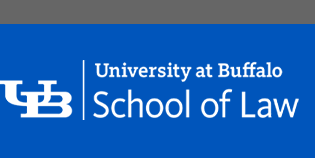Files
Download Full Text (184 KB)
Description
Published as Chapter 6 in Environmental Law and Contrasting Ideas of Nature: a Constructivist Approach, Keith H. Hirokawa, ed.
Whereas a large and growing scholarly literature is dedicated to studying human populations in the city, not much has been written about nonhuman animals in this space. This essay explores the presence of nonhuman animals in the American city through a legal lens. I begin with a few general contemplations about the legal classification of animals in American cities, and then move to explore specific legal classifications of animals in cities: domestic and companion animals, agriculture or livestock animals, wild animals, and pests. I argue that such animal classifications are not as fixed and static as they present themselves to be. For example, a pig or a horse may be a companion animal under anti-cruelty provisions or livestock under provisions regulating agribusiness. Studying various examples of animal reclassification, this essay demonstrates the inherent messiness of the legal ordering of animals and reveals the legal struggles to redefine such ordering. The honeybee in particular demonstrates the fluidity between various animal classifications and the ways in which animals are subject to, and themselves affect, legal and administrative practices.
Alongside the attempt to classify animals, a considerable effort also goes into keeping animals confined within their particular classifications. The prohibitions from keeping wild and farm animals as pets, and those that prohibit treating pets as pests or pests as pets — all point to the desire of lawmakers to place and keep animals within their classifications so as to ensure that cities are safe, sanitized, and free of animal nuisances. At the same time, human and nonhuman animals also express their own, sometimes conflicting, trajectories that transgress and challenge their black-boxing within legal classifications, forcing lawmakers and enforcers to adapt or develop new legal ways to organize disorderly nature so as to redefine, reestablish, and reinforce order. My reading of animal laws thus illuminates the dynamic and often conflicted human-animal existence in the city and its translation and reiteration by legal texts and practices.
Publication Date
2014
Publisher
Cambridge University Press
City
New York
ISBN
9781107033474
First Page
112
Last Page
132
Keywords
animal law, legal classification and reclassification, nonhumans in the city, disorderly nature, domestic and companion, agriculture and livestock, wild animals, pests, honeybees
Disciplines
Geography | Law
Required Text
This material has been published in Environmental Law and Contrasting Ideas of Nature: a Constructivist Approach edited by Keith H. Hirokawa. This version is free to view and download for personal use only. Not for re-distribution, re-sale or use in derivative works. © Keith H. Hirokawa 2014.
Recommended Citation
Irus Braverman, Animals and Law in the American City in Environmental Law and Contrasting Ideas of Nature: a Constructivist Approach 112 (Keith H. Hirokawa, ed., Cambridge University Press 2014)




Comments
This material has been published in Environmental Law and Contrasting Ideas of Nature: a Constructivist Approach edited by Keith H. Hirokawa. This version is free to view and download for personal use only. Not for re-distribution, re-sale or use in derivative works. © Keith H. Hirokawa 2014.